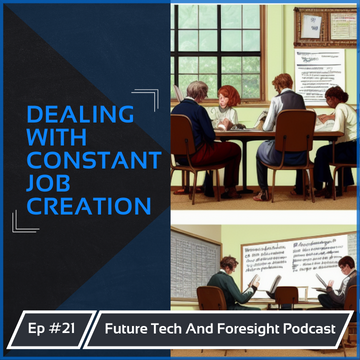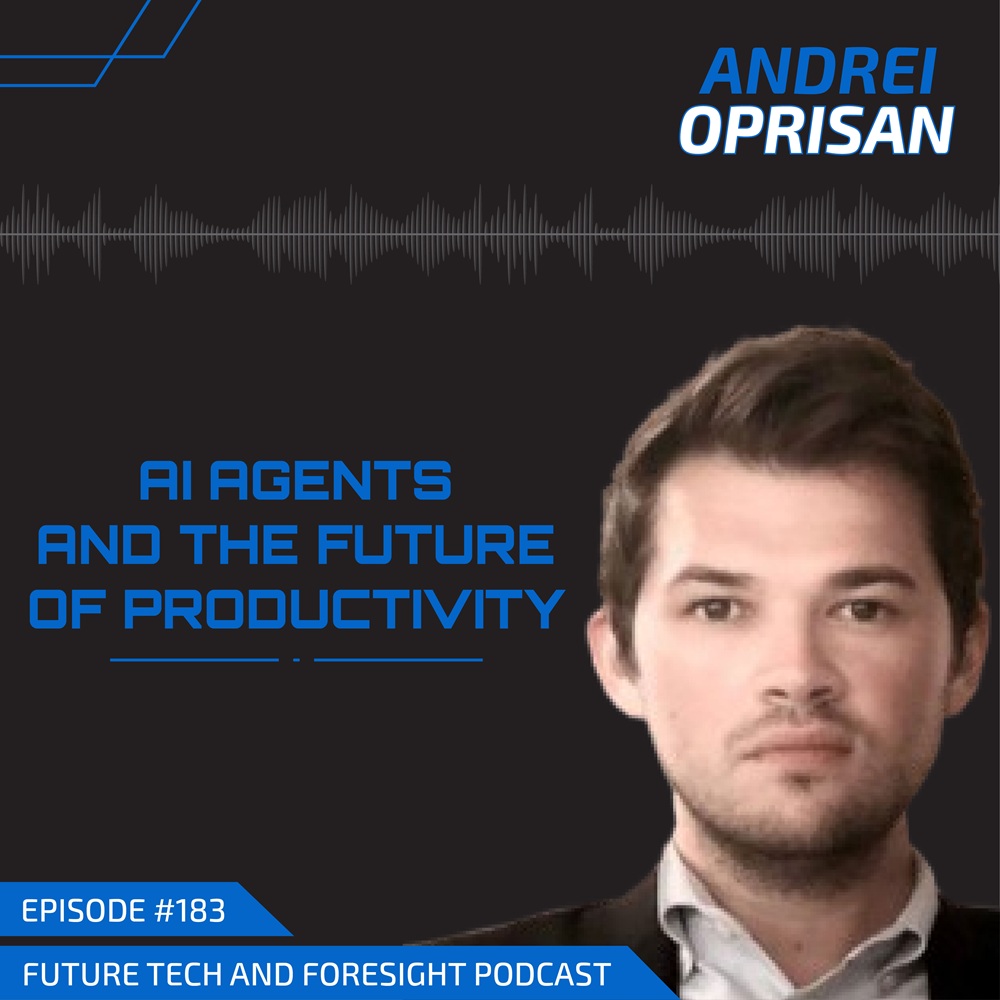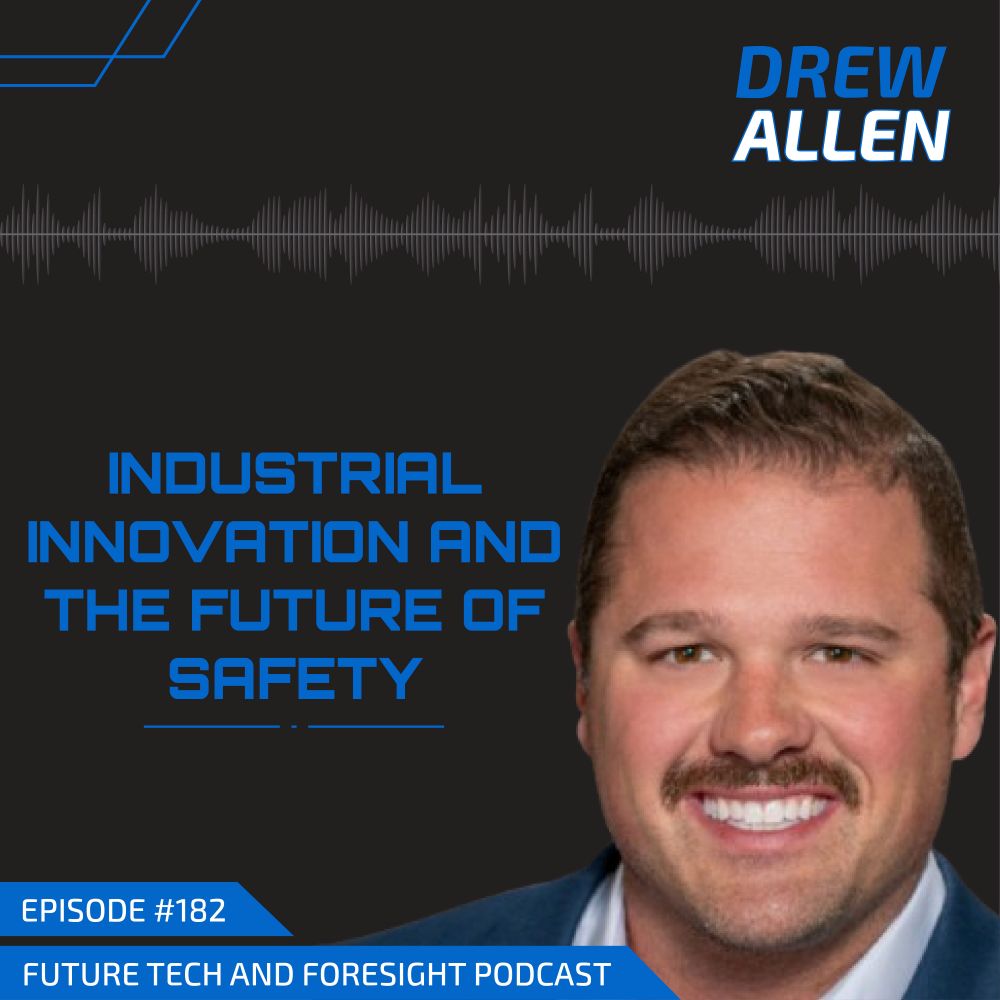About The Episode
This week we look at creative destruction (which assumes new jobs will be continuously made while old jobs will be automated out of existence) and the solutions already being employed to tackle it.
Transcript
Intro
Before jumping into some interesting automation news I wanted to mention the new blog post about exponential tech growth that will be up at the same time as this episode. As I mentioned at the start of this podcast I’ll have new blog posts that support the ideas being presented here, but don’t necessarily fit in as a standalone podcast episode. If you’ve ever been interested in Moore’s law or why everyone seems to be overwhelmed with the state of technological growth and all the new technologies coming into our lives, this episode explores that and also explains how the technologies I talk about on the podcast are possible and how the future predictions made about them might actually be plausible. As always you can check it out on automatedpodcast.org.
Tech News Update
This past week, MUSA, a surgical robot built by a Dutch Robotics company, was used in the first in-human robotics-assistem microsurgery. MUSA can operate on vessels under a milimeter, from .2 to .8mm in diameter. This is compared to the most successful surgery robot ‘DaVinci system, which came out 20 years ago but can ‘only’ operate down to 1 milimeter. What’s the benefit of this though? Faster healing, removes any non-deliberate hand movement made by the surgeon which improves the success chance of the operation.
After 2 years of early access the Museum of other realities has opened to the public. The MOR surrounds visitors in the colorful works and captivating sounds of a rotating lineup of experimental projects by genre-defying artists dedicated to blending the worlds of immersive technology and art. Essentially you can visit an entire museum from the comfort of your home, of the newest and more futuristic displays in VR. It also hosts a number of live events allowing like minded art-lovers to interact. If I figure out how to connect my VR headset to it i’ll have a future update on this.
In more VR news, VR headsets are being used to better the lives of senior citizens all over the world by reducing loneliness, improving their mental health and transporting them to far-flung places without needing to leave the comfort of their home. Two Tucson retirement communities are the launch pad for a program to see how virtual reality technology helps senior citizens with cognition, dementia, loneliness and other issues. elderly residents have been able to ride on a roller coaster, visit the Egyptian Pyramids and take a trip down memory lane, back to places they used to live. A Japanese researcher Kenta Toshima is using VR to help nursing home residents visit places from their pasts and tick off locations on their bucket lists. There are a couple other examples in the article that is listed in the shownotes.
Solutions to rapid creative destruction
While the next episode will look at the solutions proposed to the automation of jobs or technological unemployment, this episode will look at the solution to the first perspective, or the historical perspectives which assumes new jobs will be continuously being made. But I don’t think I’ve actually properly named this perspective in the podcast yet, apart from calling it the historical perspective. I do a lot of research for the episodes and sometimes certain parts get cut due to length issues but I think it’s important to very quickly review this point before moving forward. This perspective, which builds in continuous job creation is also known as creative destruction. It is an economics term and was first put forward by Joseph Schumpeter in 1942. Though he directed it mainly for innovations within manufacturing, it is now generally considered to work in most contexts. But creative destruction as you may have guessed from the name isn’t simply about job creation, but also encapsulates the eradication of the jobs that are replaced. I’ve brought up many examples of this in the podcast but I still think the best one is the growth and quick bankruptcy of brick and mortar Blockbuster video stores and their near overnight replacement with Netflix’s streaming service, who has dominated the home entertainment industry for years now. However, with the new ‘streaming wars’ some argue that even Netflix’s days numbered and will be replaced by a new service. I personally think if this happens it will be with VR or AR systems but I guess we will find out. As with entertainment, I think an easy to see example is also the replacement of horses with personal motorized vehicles, which I think anyone listening to this podcast will agree will be made obsolete by autonomous vehicles over the course of this decade. And of course, with these industries being disrupted all the jobs linked to them follow suit.
But! This disruption is filled with difficulty and pain for those whose professions are made obsolete. So what are the solutions being proposed for this?
Re-skilling Centres
I spent 8 months living and studying and writing my masters thesis in Oslo. If you’ve never been I recommend visiting Norway and the beautiful natural landscapes that it has to offer. But it also has another interesting aspect that you probably won’t come across as a tourist. The NAV, or the Norwegian Labour and Welfare Administration employs some 19,000 people and administers an entire third of Norway’s national budget. Now it’s main schemes deal with sickness benefits, pensions, and work leave financial support, but it’s main goal is to have more people actively working and fewer on benefits. To this end they opened up a re-skilling centre just as I was completing my masters to deal with the expected wave of job seekers who would be made redundant due to new technologies over the subsequent years. It was to be part of a series of centres to support the expected speeding up of changes, and is part of a larger trend across the world that is seeing these ‘re-skilling centres’ pop up. I think they are emerging as the awareness of exponential technological growth coupled with the automation technologies talked about on this podcast will change the labour market more rapidly than at any time before. Concepts such as life-long learning are now starting to be utilised in large reports about the future of work from organisations like the World Economic Forum and the Boston Consulting Group. Policy makers are also starting to make a push on efforts to consider reskilling as an essential part of having future economic growth.
Back in episode 18 I critiqued the fake job trend that exploded especially in Europe after the 2008 economic crisis. However, within the perspective of creative destruction, centres like the one described that create an entirely fake job that enables individuals to get on the job skills without actually being on a job could prove invaluable within this life-long learning approach…just as long as the life-long learning doesn’t lead to lifelong fake jobs.
One interesting project is actually from Canada. The Future Skills Centre is a centre that connects across Canada and initiates projects to support Canadians develop relevant skills based on the research that they do in identifying said skills. One project that I found particularly interesting was where virtual reality headsets were used as learning aids for those in the trucking industry to enhance driving skills by using eye tracking cameras to assess where the trainees were making incorrect turns etc.
This touches on another interesting point in that new technologies are being used to support this upskilling trend. VR is especially effective because you can replay a lesson as many times as you want, without an instructor getting physically or mentally tired. VR training has also been shown to have similar or better outcomes in terms of remembering and performing a newly learned task as compared to the traditional physical way. For these reasons it is being used already in several training programs.
For instance both BP and ExxonMobile use VR to train employees in safety procedures where mistakes can be rapidly identified, and fixed. And these mistakes if done in the real world are life threatening. Essentially, muscle memory is being built in an entirely virtual environment, enabling employees to react properly if an actual emergency occurs in a drilling operation. Even UPS the delivery company is using VR in 9 of its teaching facilities to train student drivers in dealing with hazards and different road conditions, but plans to incorporate other uses for VR into its training programme. Verizon has even trained retail employees on how to deal with armed robberies. So even though these examples might not yet be supporting the jobs or skills of the future as many are training jobs that will be impacted over the next few years, I think they show that there is already a structure in place to deal with a re-skilling need.
Conclusion
But a counter viewpoint also needs to be taken into consideration and usually comes up in discussions surrounding the life-long learning push.
This re-skilling movement will only work if the exponential growth of technology doesn’t overtake the speed at which we can learn new skills. This has been the case for every major technological disruption. As I discussed back in episode 6*, many of the horse drawn carriage makers turned into vehicle parts suppliers but had ample time to re-train their workforce in order to make the transition successful. The fear today is that technological change is happening at faster and faster rates, that if a profession is automated and an individual starts a re-skilling programme, there may not be any guarantee that by the time they have completed the programme their skills will still be relevant. If this ends up being the case a perpetual re-skilling loop can be envisaged which may lead to the continuous fake job circumstance I mentioned above. Again my new blog post explains more about the exponential nature of modern technological growth if you’re interested.
Next week we will look at the solutions proposed to tackle the perspective of technological unemployment.











